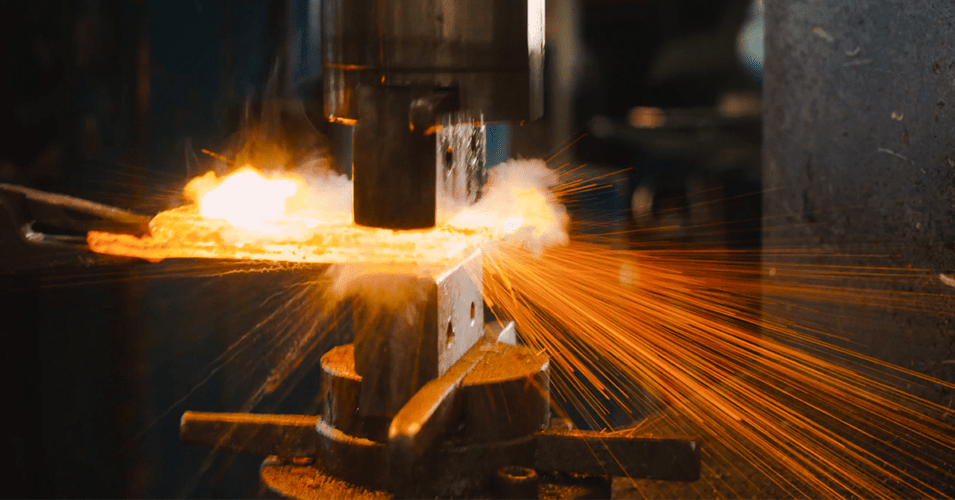Hot forging is an age-old metalworking technique that has been used for centuries to shape and manipulate metal into various forms. While it is primarily associated with industrial applications like manufacturing tools and machinery, hot forging also possesses a unique aesthetic quality that has captured the imagination of artists and artisans around the world. In this blog, we will explore the beauty of hot forging and its artistic and decorative applications.
The Art of Hot Forging
Hot forging involves heating a piece of metal to a malleable temperature and then shaping it using various tools and techniques. The metal is typically heated to a temperature where it becomes red or orange hot, making it more pliable and easier to work with. The skilled blacksmith or artisan then hammers, twists, and bends the metal into the desired form. This process requires precision, skill, and an intimate understanding of the material being worked with.
The Beauty in Simplicity
One of the most captivating aspects of hot forging lies in its simplicity. Unlike complex and intricate techniques like welding or casting, hot forging relies on the basic principles of heat and force. The raw, elemental nature of the process is what gives hot-forged pieces their unique charm. The marks left by the hammer and the organic flow of the metal create a visual narrative that tells the story of the artist’s hand at work.
Endless Possibilities
Hot forging offers a wide range of possibilities for artistic expression. From delicate and intricate scrollwork to bold and rugged forms, hot-forged metal can take on countless shapes and designs. Artisans can experiment with different metals, such as iron, steel, brass, and copper, each of which brings its own character and visual appeal to the finished piece.
Decorative Applications
The artistic beauty of hot forging finds its way into numerous decorative applications, enriching our surroundings with both functional and aesthetic elements.
- Ironwork and Gates: Ornate iron gates, fences, and railings have been a hallmark of hot forging for centuries. These pieces not only provide security and functionality but also add a touch of elegance to homes, gardens, and public spaces.
- Lighting Fixtures: Hot-forged metal is often used to create stunning lighting fixtures. The interplay of light and shadow on the textured surfaces of these fixtures can transform any space into a work of art.
- Furniture: Hot forging allows artisans to craft unique and personalized furniture pieces. Chairs, tables, and other furnishings made through this technique often become the focal point of a room.
- Sculptures: Some artists take hot forging to the realm of pure artistic expression, creating sculptures that showcase the fluidity and versatility of the medium. These sculptures can be found in galleries, parks, and public spaces, captivating viewers with their beauty and craftsmanship.
- Hardware and Home Decor: Decorative hooks, handles, and brackets crafted through hot forging can add a touch of rustic charm to homes and businesses. These small yet intricate details can significantly enhance interior and exterior decor.
Preserving Tradition in a Modern World
In today’s fast-paced, mass-produced world, the art of hot forging represents a connection to tradition and craftsmanship. It serves as a reminder that in an age of automation and digital design, there is still value in the human touch and the time-honored techniques that have been passed down through generations.
Conclusion
The beauty of hot forging lies not only in its ability to shape metal but also in its capacity to evoke emotion and tell a story. Whether used to create functional iron gates or abstract sculptures, hot forging is a testament to the enduring appeal of craftsmanship and the timeless beauty of working with one’s hands. As we continue to appreciate the artistry and decorative applications of hot forging, we ensure that this ancient craft remains vibrant and relevant in our modern world.





